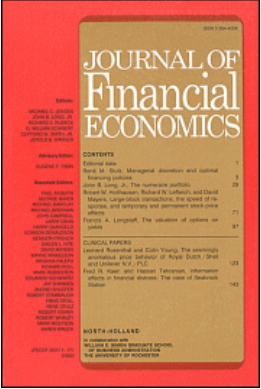为什么期权市场信息可以预测股票收益?
IF 10.4
1区 经济学
Q1 BUSINESS, FINANCE
引用次数: 0
摘要
一些有影响力的研究表明,从期权价格计算的隐含波动率的转换可以预测股票收益。这种可预测性令人费解,因为市场参与者很容易观察期权价格。我们发现这种可预测性与反映股票借贷费用的隐含波动率是一致的,这些隐含波动率已知可以预测股票收益。我们推导了一个有关期权隐含波动率价差与借贷费用的公式。在这种关系的激励下,我们表明,如果排除高费用股票,隐含波动率价差和偏度的收益可预测性至少降低了三分之二。从期权隐含波动率计算的其他预测指标的模式是相似的。本文章由计算机程序翻译,如有差异,请以英文原文为准。
Why does options market information predict stock returns?
Several influential studies show that transformations of implied volatilities calculated from options prices predict stock returns. This predictability is puzzling because market participants readily observe options prices. We find that this predictability is consistent with implied volatilities reflecting stock borrow fees that are known to predict stock returns. We derive a formula relating the option-implied volatility spread to the borrow fee. Motivated by this relation, we show that the return predictability from implied volatility spread and skew decreases by at least two-thirds if high-fee stocks are excluded. The patterns for other predictors computed from option implied volatilities are similar.
求助全文
通过发布文献求助,成功后即可免费获取论文全文。
去求助
来源期刊

Journal of Financial Economics
Multiple-
CiteScore
15.80
自引率
4.50%
发文量
192
审稿时长
37 days
期刊介绍:
The Journal of Financial Economics provides a specialized forum for the publication of research in the area of financial economics and the theory of the firm, placing primary emphasis on the highest quality analytical, empirical, and clinical contributions in the following major areas: capital markets, financial institutions, corporate finance, corporate governance, and the economics of organizations.
 求助内容:
求助内容: 应助结果提醒方式:
应助结果提醒方式:


